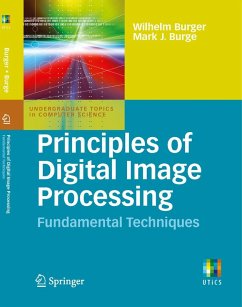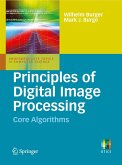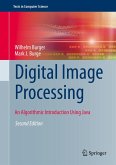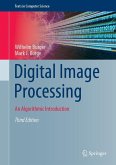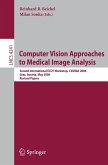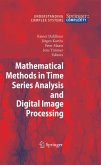This easy-to-follow textbook provides a modern, algorithmic introduction to digital image processing, designed to be used both by learners desiring a firm foundation on which to build, and practitioners in search of critical analysis and concrete implementations of the most important techniques. The text compiles the key elements of digital image processing, starting from the basic concepts and elementary properties of digital images through simple statistics and point operations, fundamental filtering techniques, localization of edges and contours, and basic operations on color images. Mastering these most commonly used techniques will enable the reader to start being productive straight away.
Features and topics:
This concise, yet comprehensive and reader-friendly text is ideal for undergraduates studying foundation courses, as well as ideal for those seeking to expand their knowledge via self-study.
Wilhelm Burger, Ph.D., is the director of the Digital Media degree programs at the UpperAustria University of Applied Sciences at Hagenberg. Mark J. Burge, Ph.D., is a senior principal in the Center for National Security and Intelligence at Noblis in Washington, D.C.
Features and topics:
- Practical examples and carefully constructed chapter-ending exercises drawn from the authors' years of experience teaching this material
- Real implementations, concise mathematical notation, and precise algorithmic descriptions designed for programmers and practitioners
- Easily adaptable Java code and completely worked-out examples for easy inclusion in existing (and rapid prototyping of new) applications
- Uses ImageJ, the image processing system developed, maintained, and freely distributed by the U.S. National Institutes of Health (NIH)
- Provides a supplementary website with the complete Java source code, test images, and corrections - www.imagingbook.com
- Additional presentation tools for instructors including a complete set of figures, tables, and mathematical elements
This concise, yet comprehensive and reader-friendly text is ideal for undergraduates studying foundation courses, as well as ideal for those seeking to expand their knowledge via self-study.
Wilhelm Burger, Ph.D., is the director of the Digital Media degree programs at the UpperAustria University of Applied Sciences at Hagenberg. Mark J. Burge, Ph.D., is a senior principal in the Center for National Security and Intelligence at Noblis in Washington, D.C.
Dieser Download kann aus rechtlichen Gründen nur mit Rechnungsadresse in A, B, BG, CY, CZ, D, DK, EW, E, FIN, F, GR, HR, H, IRL, I, LT, L, LR, M, NL, PL, P, R, S, SLO, SK ausgeliefert werden.
From the reviews:
"This text is the second of three volumes by Burger and Burge to provide an algorithmic introduction to digital image processing. ... This textbook is for academicians who want a mathematical or theoretical foundation that underlies the methods used, as well as for engineers who are interested in practical implementations of the most important algorithms. The volume is a very nice extension to the material and a worthwhile read." (Minette Carl, ACM Computing Reviews, August, 2009)
"This is the second textbook from authors three-book series for graduate and post-graduate courses covering digital image processing techniques; earlier the material appeared in one comprehensive volume Digital Image Processing: An Algorithmic Introduction using Java. This volume covers regions in binary images, curve and corner detecting, color spaces and quantization, transformations ... and comparing/matching of images. The presentation is very algorithmic and expects hands-on experimentation with presented notions and algorithms, every chapter ends with exercises ... ." (Jaak Henno, Zentralblatt MATH, Vol. 1185, 2010)
"This text is the second of three volumes by Burger and Burge to provide an algorithmic introduction to digital image processing. ... This textbook is for academicians who want a mathematical or theoretical foundation that underlies the methods used, as well as for engineers who are interested in practical implementations of the most important algorithms. The volume is a very nice extension to the material and a worthwhile read." (Minette Carl, ACM Computing Reviews, August, 2009)
"This is the second textbook from authors three-book series for graduate and post-graduate courses covering digital image processing techniques; earlier the material appeared in one comprehensive volume Digital Image Processing: An Algorithmic Introduction using Java. This volume covers regions in binary images, curve and corner detecting, color spaces and quantization, transformations ... and comparing/matching of images. The presentation is very algorithmic and expects hands-on experimentation with presented notions and algorithms, every chapter ends with exercises ... ." (Jaak Henno, Zentralblatt MATH, Vol. 1185, 2010)

